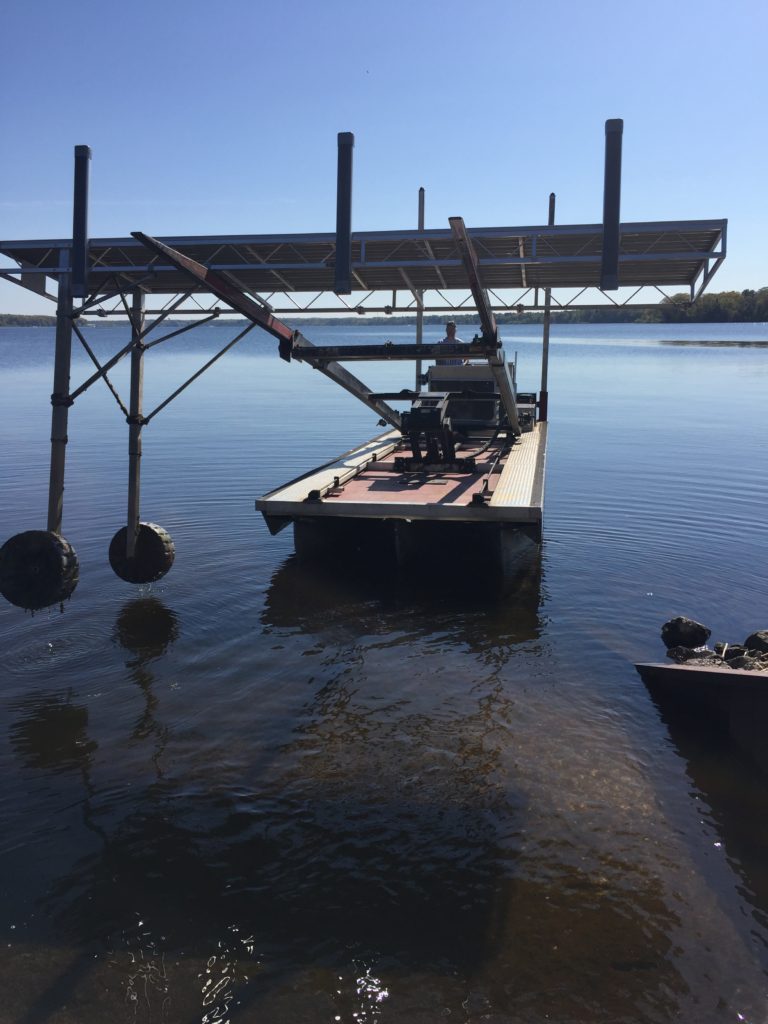Leading Signs You Required Professional Dock Repairs This Season
Leading Signs You Required Professional Dock Repairs This Season
Blog Article
Reliable Dock Repair Service Techniques: Guaranteeing Architectural Stability
Ensuring the architectural integrity of anchors with efficient repair service techniques is critical for the longevity and security of aquatic centers. Consequently, choosing the ideal repair work materials, such as corrosion-resistant alloys and composite materials, is vital for longevity.
Examining Dock Damage
Examining dock damage is a vital first action in ensuring the structural integrity and security of any docking facility. Key aspects to take a look at include the dock's foundation, pilings, decking, and equipment (Dock Repairs).
Architectural designers or qualified inspectors commonly execute these evaluations utilizing specialized methods and tools. Undersea examinations could utilize finder tools or remotely operated cars (ROVs) to spot submerged damage. Above water, visual evaluations are matched by utilizing dampness meters and various other diagnostic devices to reveal underlying concerns not instantly visible to the nude eye.

Picking Repair Service Products
Selecting the ideal repair service products is a critical action in the dock restoration procedure, one that straight affects the long life and performance of the repaired framework. Material selection must be driven by variables such as ecological conditions, load-bearing needs, and compatibility with existing dock components.
Along with wood, composite materials are significantly popular due to their sturdiness and reduced upkeep demands. Compounds, normally made from a mix of plastic and wood fibers, offer exceptional resistance to rot, pests, and UV damages. For metal docks, picking corrosion-resistant alloys such as galvanized steel or marine-grade light weight aluminum is necessary to prevent rust and make sure structural honesty in saline water conditions.
Epoxy materials and marine-grade sealants are vital for repairing cracks and securing joints, providing a waterproof obstacle and enhancing the dock's total stamina. By diligently picking top notch products, dock repairs can attain resilient results, thereby safeguarding versus future destruction and making certain risk-free, trusted usage.
Architectural Support Methods
Effective architectural reinforcement methods are important in ensuring the security and durability of dock repair work. This approach is specifically reliable for docks revealed to heavy loads or extreme environmental conditions.
One more crucial strategy is the application of fiber-reinforced polymers (FRP) These products supply high strength-to-weight ratios and superb resistance to corrosion, making them perfect for strengthening wooden or concrete anchors. FRP can be used in sheets or strips and bonded with epoxy materials to improve architectural honesty.
Supporting and anchoring systems also play a vital function in architectural support. Cross-bracing, using metal or wooden light beams, can counteract lateral forces, decreasing swaying and motion. Securing systems, such as helical piers or driven stacks, supply a steady foundation by moving loads to deeper, extra stable dirt layers.
Finally, the combination of load-distribution plates can help disperse weight extra evenly throughout the dock's surface, alleviating local tension points. These methods collectively make sure that docks remain durable and safe, with the ability of holding up against the roughness of their operational environment.
Advanced Repair Techniques

Another advanced method entails undersea welding, which enables repair work to be performed without the need to dewater the location. This technique is particularly advantageous for resolving structural concerns in submerged dock elements, guaranteeing minimal disturbance to operations. Boosted welding techniques, combined with robotic systems, deliver precision and integrity, therefore prolonging the life-span of the dock.
Furthermore, cathodic defense systems are carried out to protect against rust in metal dock frameworks. By utilizing sacrificial anodes or amazed present systems, these techniques efficiently reduce the electrochemical processes that lead to material degeneration.
Finally, advanced monitoring technologies, such as architectural health tracking (SHM) systems, offer real-time data on the problem of dock frameworks. These systems enable positive upkeep and timely treatments, eventually making certain the long-term architectural honesty of the about his dock.
Upkeep and Prevention
Upkeep and prevention are basic ideas that underpin the long life and safety and security of dock structures. Regular inspections are extremely important, enabling early discovery of deterioration, prospective weaknesses, and environmental influences. An aggressive strategy, involving routine look for rust, rot, and architectural changes, alleviates costly repairs and extends the dock's operational life.
Safety nets ought to include applying safety finishings to metal components to defend against corrosion and making use of treated timber to stand up to decay. Furthermore, guaranteeing appropriate water drainage and ventilation can avoid water build-up, which is an usual root cause of structural destruction. Including high quality materials and adhering to supplier guidelines throughout building and construction and repair phases additionally play essential functions in improving durability.

Training personnel in dock maintenance finest techniques guarantees constant application of safety nets. Leveraging technological advancements, such as drones for evaluations and sensors for real-time monitoring, can additionally boost upkeep efforts. By prioritizing upkeep and prevention, dock proprietors can guarantee architectural integrity, functional security, and cost-efficient monitoring over the dock's life expectancy.
Verdict
In final thought, keeping the architectural honesty of marine facilities demands thorough dock repair strategies. Advanced repair methods, coupled with regular upkeep practices, make certain the dock continues to be risk-free and functional under diverse ecological problems.
Ensuring the structural integrity of docks through effective repair service strategies is extremely important for the longevity and safety and security of marine facilities.Selecting the ideal Go Here repair products is an essential action in the dock repair procedure, one that directly influences the longevity and performance of the repaired framework.Efficient structural reinforcement strategies are critical in guaranteeing the stability and durability of dock repair services. By prioritizing maintenance and prevention, dock owners can make sure structural stability, operational security, and economical monitoring over the dock's life-span.
In final thought, preserving the structural honesty of aquatic centers demands comprehensive dock repair service strategies.
Report this page